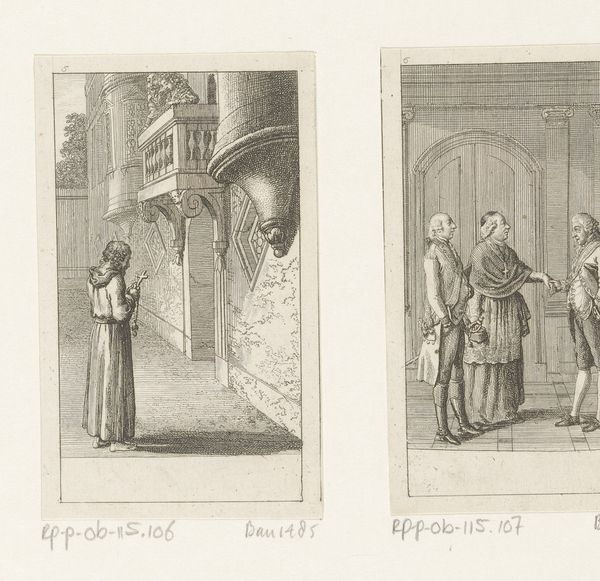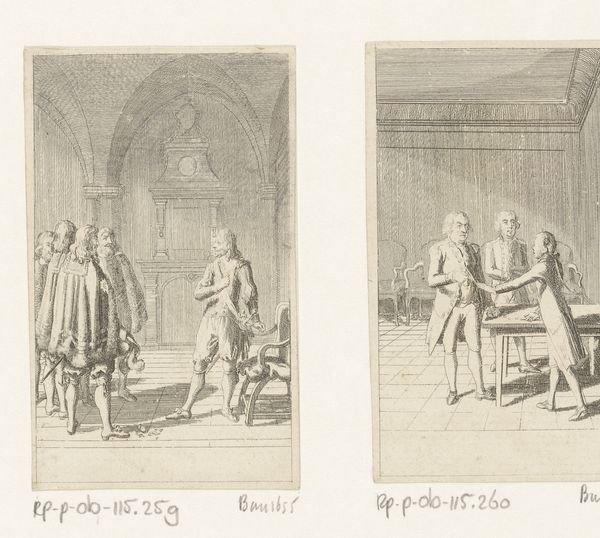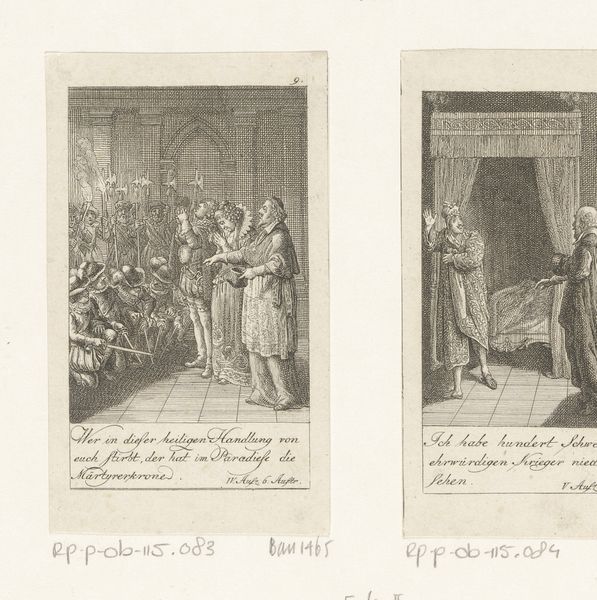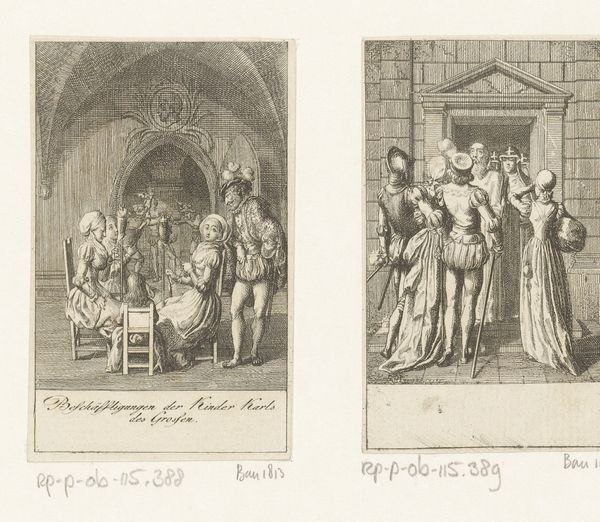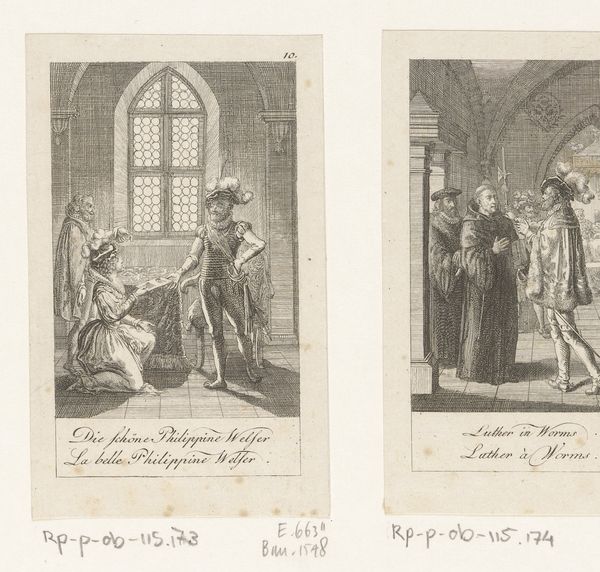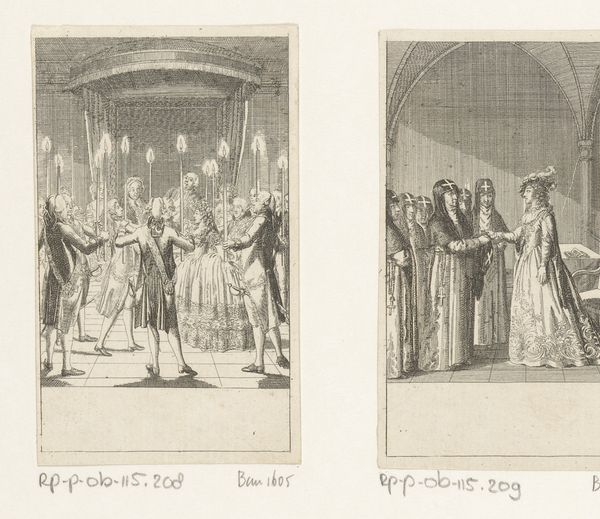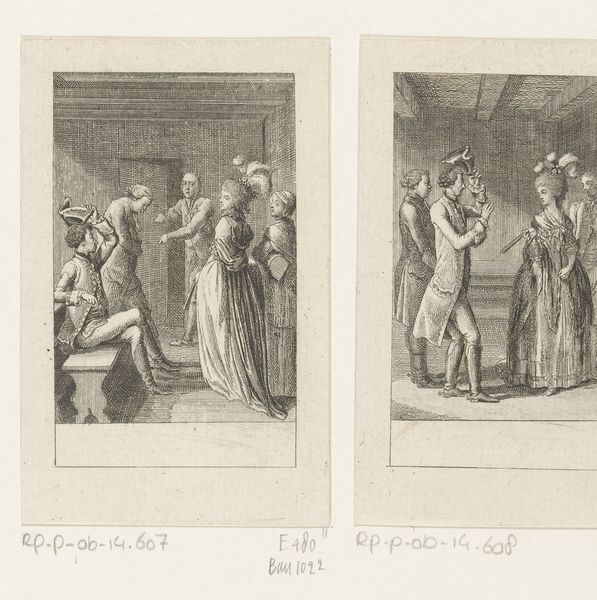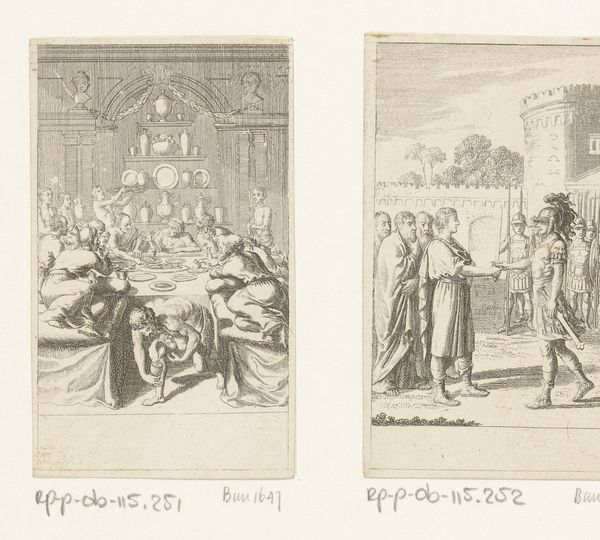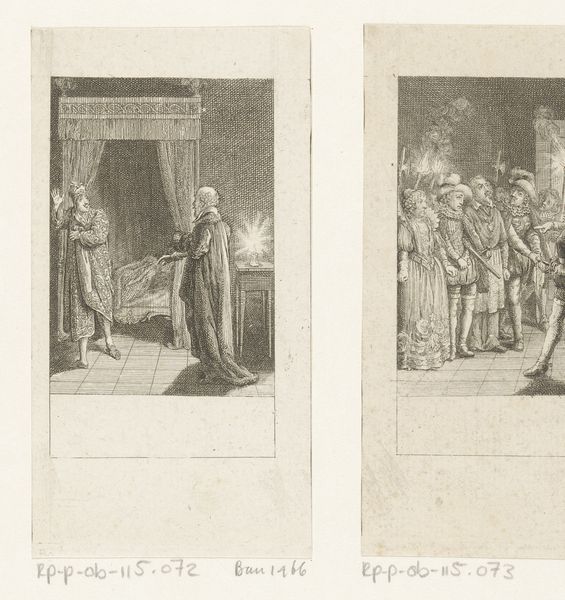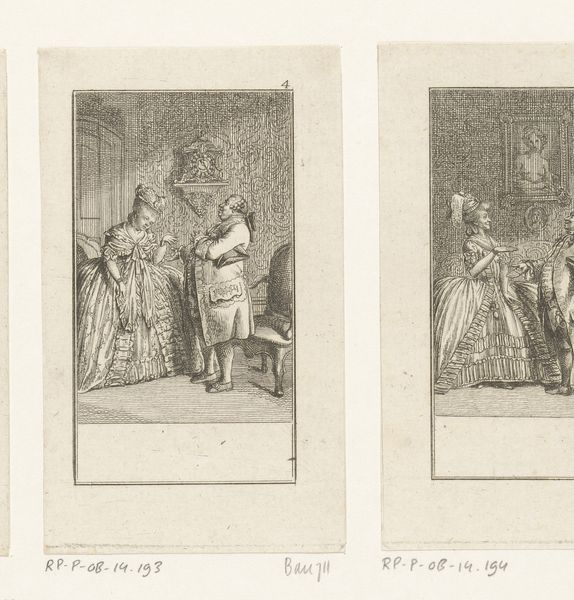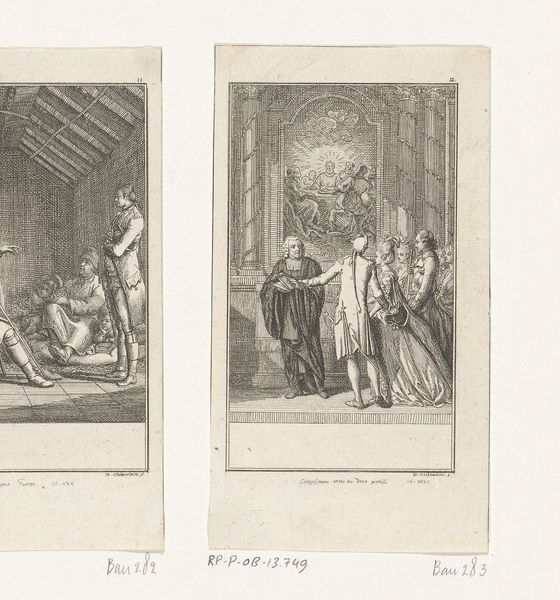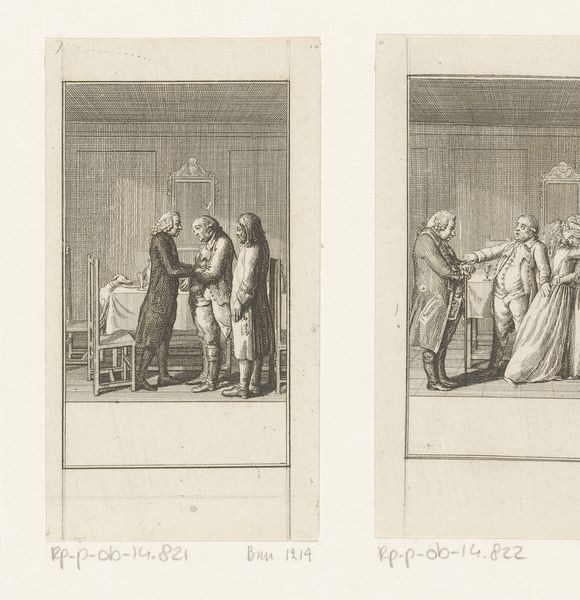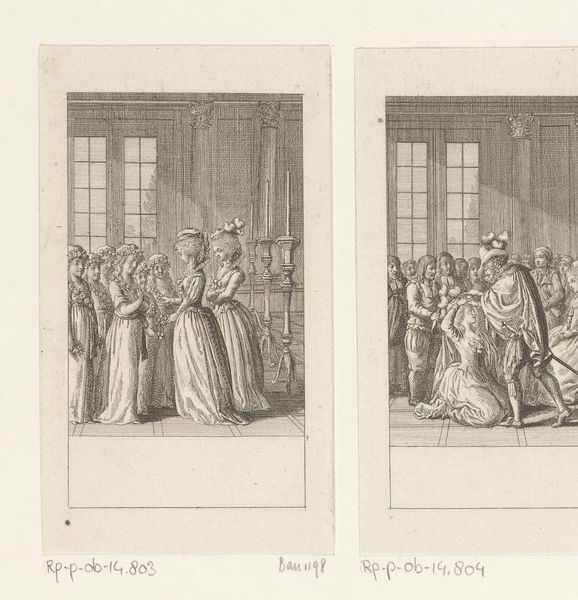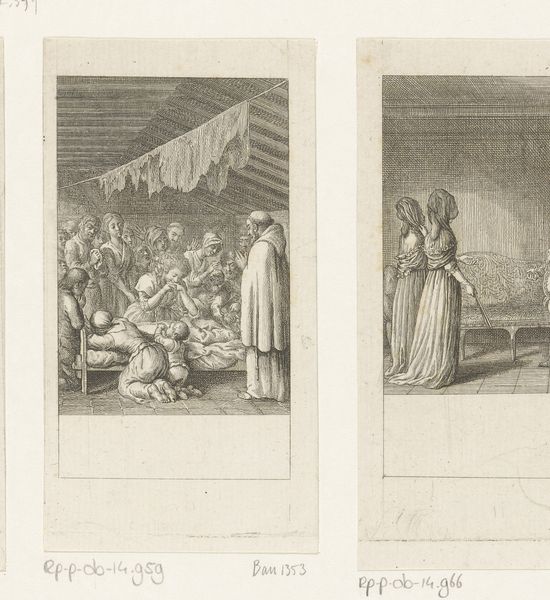
Pierre Terrail de Bayard met de dochters van de waardin 1793
0:00
0:00
print, engraving
#
neoclacissism
# print
#
genre-painting
#
history-painting
#
engraving
Dimensions: height 90 mm, width 56 mm
Copyright: Rijks Museum: Open Domain
Editor: This is "Pierre Terrail de Bayard met de dochters van de waardin" or, Pierre Terrail de Bayard meeting the innkeeper's daughters, a print by Daniel Nikolaus Chodowiecki from 1793, here at the Rijksmuseum. It's got this incredibly detailed engraving, and depicts two separate interior scenes. I'm curious about what's going on in each scene... what do you make of these images, taken together? Curator: It's interesting to view these two scenes as related narratives. Chodowiecki offers us not just a snapshot of history, but also explores virtue and class. Bayard's interaction with the daughters contrasts sharply with the later scene among courtiers, doesn't it? Observe how his upright posture and direct gaze in the first panel communicate honor and respect. How might that scene serve as a visual anchor for interpreting the rest of the piece? Editor: The posture definitely makes a difference! In the second scene, he's surrounded by others, but he still looks so honorable. It also stands out that he is focused on the barefoot figure on the right side, while surrounded by nobleman! Why do you think that detail is so important? Curator: Chodowiecki uses the iconography of bare feet to invoke humility, especially during the Neoclassical movement. The noblemen who are next to Bayard wear elaborate gowns; in sharp contrast the barefoot figure emphasizes Bayard's ability to connect with all, and perhaps a suggestion about valuing true character above superficial wealth. Editor: It's like he's placing value judgements in a historical painting! Curator: Precisely. It prompts us to consider how historical figures are recast and remembered, and what qualities endure across time. A powerful statement encoded in these symbols! Editor: I hadn't considered how symbolic gestures could carry so much meaning through time. This definitely gave me more insight into both the print and historical context. Curator: And it allows us to think critically about cultural values. These are potent reminders of how imagery, memory, and values intersect in the making of art and history!
Comments
No comments
Be the first to comment and join the conversation on the ultimate creative platform.
